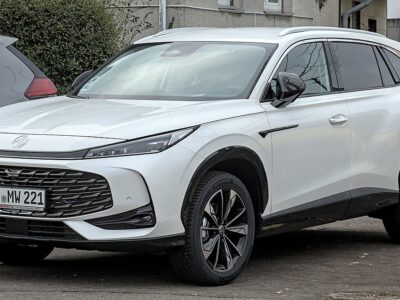
MG HS vs Hyundai Tucson: The Ultimate Compact SUV Comparison for 2025/26 Buyers
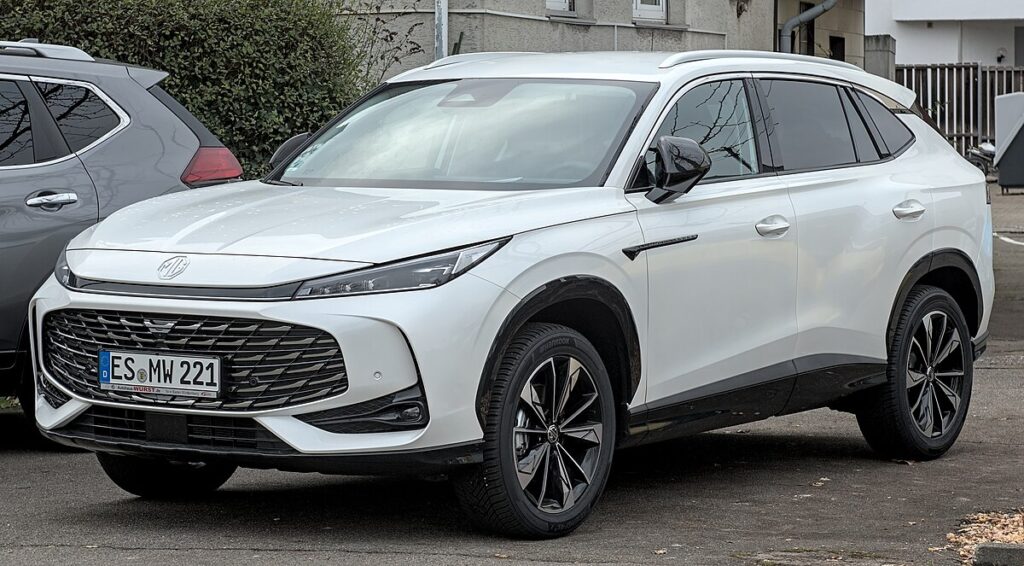
- 1. Introduction
- 2. Dimensions, Space & Practicality
- 3. Powertrain, Performance & Efficiency
- 4. Technology, Safety & Connectivity
- 5. Pricing, Running Costs & Ownership
- 6. Interior Design & Comfort
- 7. Exterior Styling
- 8. On-Road Behaviour & Ride Quality
- 9. Environmental Impact
- 10. Trim Levels Overview
- 11. Ownership Satisfaction
- 12. Cost-to-Value Ratio
- 13. Market Perception & Brand Image
- 14. Verdict: Which SUV Should You Choose?
- Final Thoughts
1. Introduction
In today’s fiercely competitive compact SUV market, two names stand tall: the MG HS and the Hyundai Tucson. Both represent modern engineering, practical design, and strong value for money. This comprehensive guide compares every key area — from performance and comfort to running costs and ownership — to help you make the right choice.
2. Dimensions, Space & Practicality
2.1 Exterior Size
The MG HS is slightly larger overall, lending it a bold and commanding presence. The Hyundai Tucson, while a touch more compact, balances its proportions perfectly for urban usability.
2.2 Boot Space
The Hyundai Tucson leads the way in luggage capacity, with up to 620 L of boot space depending on the version. The MG HS offers around 507 L, still plenty for families or weekend adventures.
2.3 Cabin Comfort & Usability
Both SUVs comfortably seat five passengers. The MG HS focuses on plush seating and affordable luxury, while the Hyundai Tucson excels in ergonomics and finish. Practicality features such as split-folding seats, wide door openings, and flat rear floors enhance daily use in both vehicles.
2.4 Verdict on Space
If luggage capacity is your top priority, the Tucson wins. If interior comfort and size for the price are key, the MG HS offers remarkable value.
3. Powertrain, Performance & Efficiency
3.1 Engine Options
- Hyundai Tucson: Available with petrol, diesel, mild-hybrid (MHEV), hybrid (HEV), and plug-in hybrid (PHEV) options.
- MG HS: Offers turbocharged petrol engines and a PHEV variant.
3.2 Power and Acceleration
- The MG HS PHEV produces around 272 HP combined, making it punchier in plug-in form.
- The Hyundai Tucson hybrid options range from 136 HP to 252 HP, depending on the engine.
Acceleration varies:
- MG HS: 0–100 km/h in about 6.8 s (PHEV).
- Tucson: 0–100 km/h in around 7.9 s (Hybrid).
3.3 Efficiency & CO₂ Emissions
- Tucson Hybrid: Around 1.2 L/100 km and 22 g/km CO₂.
- MG HS PHEV: Approximately 0.5 L/100 km and 14 g/km CO₂.
The MG’s longer electric-only range (up to 100 km) gives it a slight edge in eco-friendliness and urban efficiency.
3.4 Driving Dynamics
The Hyundai Tucson delivers a composed, refined experience, particularly in hybrid trims. The MG HS feels comfortable and predictable but slightly less polished in handling precision. Both SUVs feature smooth automatic gearboxes, responsive steering, and strong braking performance.
4. Technology, Safety & Connectivity
4.1 Infotainment
Both SUVs include:
You may be interested in reading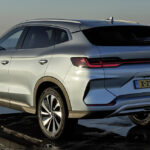 BYD Seal U vs MG HS: In-Depth Comparison to Decide the Best SUV for You
BYD Seal U vs MG HS: In-Depth Comparison to Decide the Best SUV for You- Large touchscreen displays
- Apple CarPlay and Android Auto
- Bluetooth connectivity
- Digital driver displays
The Tucson’s interface is sleeker and integrates more fluidly with navigation and connected-car systems. The MG HS offers excellent value, providing these features as standard in most trims.
4.2 Driver Assistance & Safety
- Hyundai Tucson: Adaptive cruise control, lane-keeping assist, blind-spot monitoring, rear-cross-traffic alert, and a 360° camera system.
- MG HS: Forward-collision warning, traffic-jam assist, lane-departure warning, and autonomous emergency braking.
Both vehicles achieve strong safety scores, but Hyundai’s global reputation and track record in crash testing give it a slight upper hand.
4.3 Warranty & Reliability
- MG HS: 7-year warranty (depending on region).
- Hyundai Tucson: 5-year unlimited-mileage warranty.
MG’s extended coverage adds reassurance, while Hyundai’s global dealer network ensures robust after-sales support.
5. Pricing, Running Costs & Ownership
5.1 Purchase Price
The MG HS is the clear value leader, often starting several thousand pounds lower than the Tucson. It’s ideal for budget-conscious buyers who want modern tech and comfort without overspending.
5.2 Fuel & Maintenance
- Both hybrids are inexpensive to run thanks to low fuel consumption.
- MG’s PHEV, with its long EV range, can drastically reduce fuel use for short daily trips.
- Hyundai, however, benefits from a stronger resale value and lower depreciation.
5.3 Long-Term Costs
MG’s affordable servicing and long warranty appeal to cost-focused families, while Hyundai’s reliability and dealership network add peace of mind for long-term owners.
6. Interior Design & Comfort
The MG HS interior emphasizes soft-touch materials, stitched leather finishes, and a premium ambience at a lower price point. The Hyundai Tucson opts for a more minimalist, high-tech cabin layout with intuitive controls and ambient lighting.
Both SUVs provide heated front seats, dual-zone climate control, panoramic roofs, and excellent insulation. The Tucson edges ahead in refinement, but the MG impresses for its price bracket.
7. Exterior Styling
- MG HS: Bold grille, muscular haunches, and a clean, aerodynamic silhouette.
- Hyundai Tucson: More futuristic design with parametric lights, crisp lines, and dramatic front-end detailing.
While the MG HS appeals to traditional SUV buyers, the Tucson’s avant-garde aesthetic attracts those seeking something more modern and distinctive.
8. On-Road Behaviour & Ride Quality
The Hyundai Tucson feels more sophisticated, with excellent suspension tuning that balances comfort and agility. The MG HS is tuned for softness, offering an easygoing ride over long distances but slightly less composure in corners.
You may be interested in reading BYD Seal U vs MG HS: In-Depth Comparison to Decide the Best SUV for You
BYD Seal U vs MG HS: In-Depth Comparison to Decide the Best SUV for You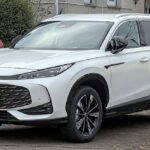 Peugeot 3008 vs MG HS: UK Market Comparison
Peugeot 3008 vs MG HS: UK Market ComparisonNoise insulation is better in the Tucson, while the HS provides a quieter cabin than expected for its class.
9. Environmental Impact
The MG HS PHEV’s extended electric-only range significantly reduces urban emissions, making it ideal for eco-conscious city driving. The Tucson hybrids, while efficient, rely more on petrol assistance at higher speeds.
Both SUVs meet Euro 6d emissions standards and qualify for reduced road taxes in many regions.
10. Trim Levels Overview
MG HS Key Trims
- SE / Excite: Entry level, solid equipment, touchscreen, and alloys.
- Exclusive: Adds leather, heated seats, and driver-assist tech.
- PHEV Exclusive: Plug-in version with highest output and EV range.
Hyundai Tucson Key Trims
- SE Connect: Strong standard tech and safety kit.
- N Line: Sporty styling and dynamic suspension tweaks.
- Ultimate / Premium: Top-tier comfort, panoramic roof, and advanced assistance features.
11. Ownership Satisfaction
Customer reviews highlight MG’s unbeatable warranty and low running costs. Hyundai owners praise durability, quality, and dealership support. Both brands are investing heavily in hybrid and electric technology, ensuring future relevance and environmental compliance.
12. Cost-to-Value Ratio
- MG HS: Outstanding features-per-pound value; unbeatable for budget-minded buyers.
- Hyundai Tucson: Premium pricing justified by engineering finesse, safety, and proven reliability.
13. Market Perception & Brand Image
Hyundai enjoys stronger brand credibility in mature markets, appealing to conservative buyers. MG’s revival under modern management has boosted its image, especially in Europe, with competitive pricing and sharp design.
14. Verdict: Which SUV Should You Choose?
If value, space, and hybrid efficiency define your priorities, the MG HS offers an exceptional balance of affordability and practicality.
If refinement, advanced technology, and strong brand backing matter more, the Hyundai Tucson stands as the better long-term choice.
Ultimately, both SUVs are well-equipped, family-friendly, and future-ready. The decision hinges on whether you prefer affordable innovation (MG HS) or refined sophistication (Hyundai Tucson).
Final Thoughts
Both the MG HS and Hyundai Tucson embody what modern SUVs should deliver — comfort, technology, and efficiency. The HS dominates on affordability and electric range, while the Tucson sets benchmarks for refinement and innovation.
You may be interested in reading BYD Seal U vs MG HS: In-Depth Comparison to Decide the Best SUV for You
BYD Seal U vs MG HS: In-Depth Comparison to Decide the Best SUV for You Peugeot 3008 vs MG HS: UK Market Comparison
Peugeot 3008 vs MG HS: UK Market Comparison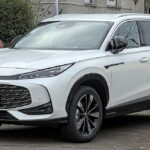 MG HS vs Ford Kuga: In-Depth Comparison of Design, Performance, and Efficiency
MG HS vs Ford Kuga: In-Depth Comparison of Design, Performance, and EfficiencyWhichever model you choose, you’ll be investing in a capable, forward-thinking SUV that blends practicality with smart design and everyday usability.
If you want to know other articles similar to MG HS vs Hyundai Tucson: The Ultimate Compact SUV Comparison for 2025/26 Buyers you can visit the category Blog.
Deja una respuesta

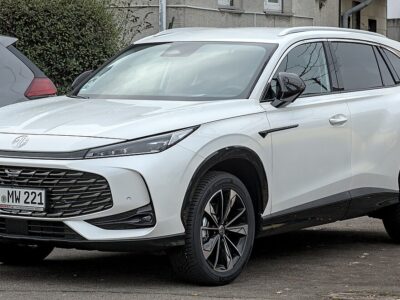
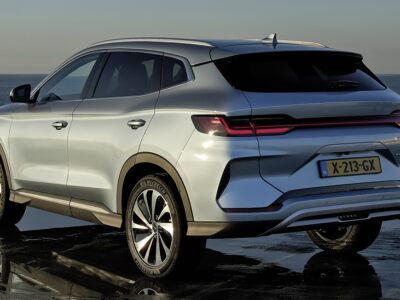
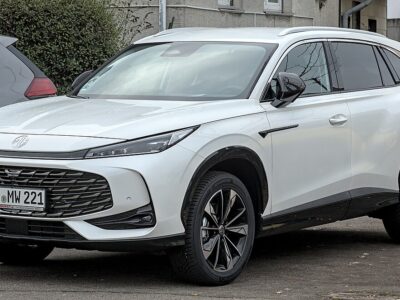
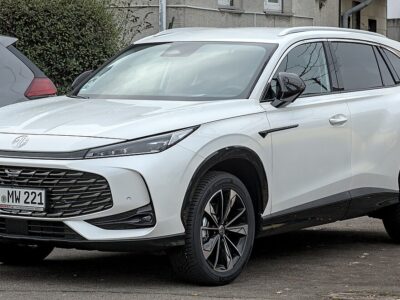
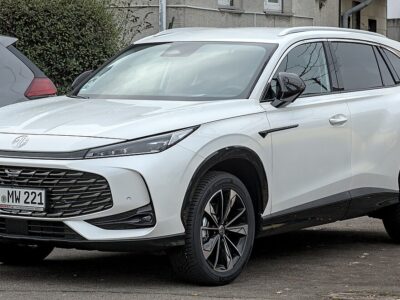
More content of your interest